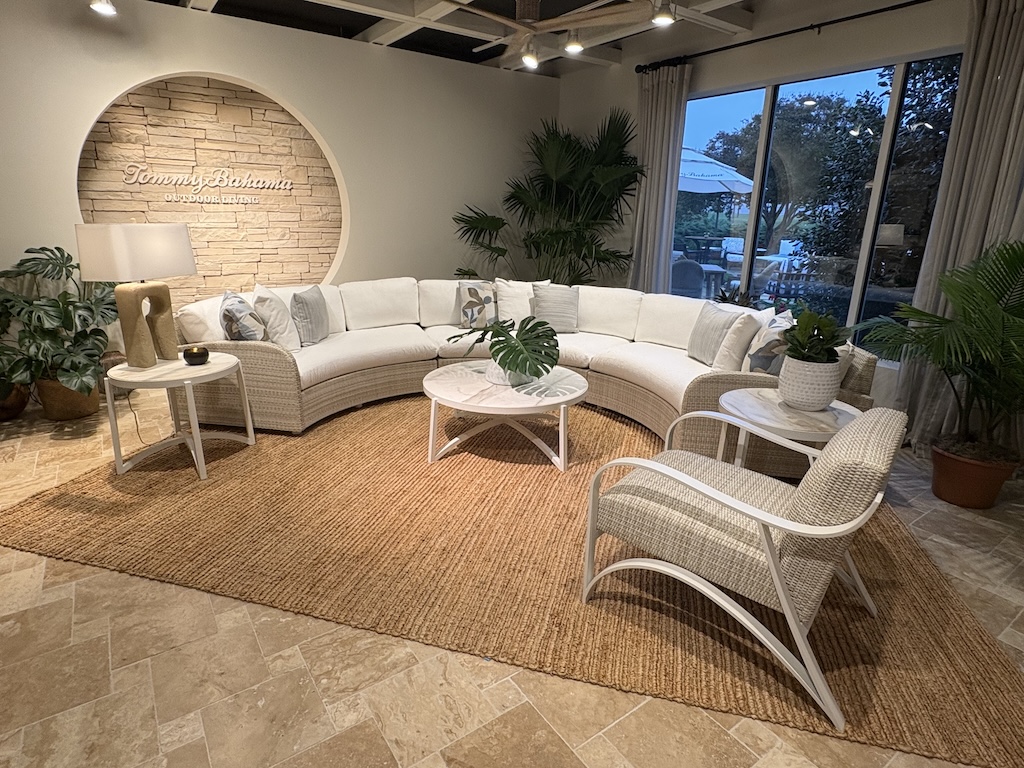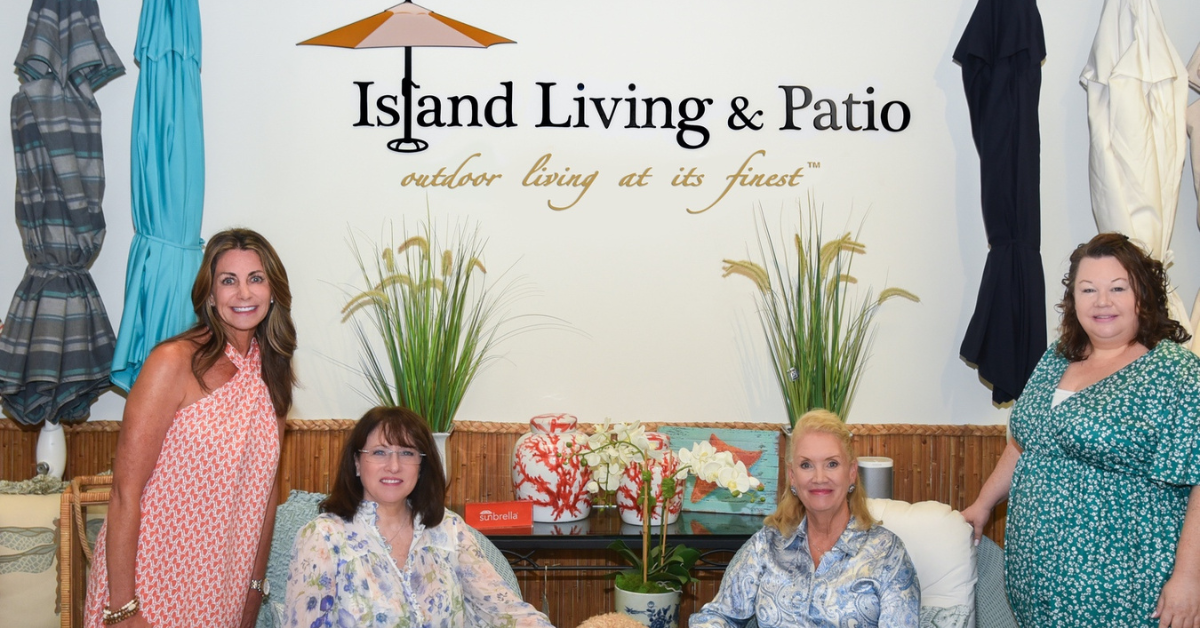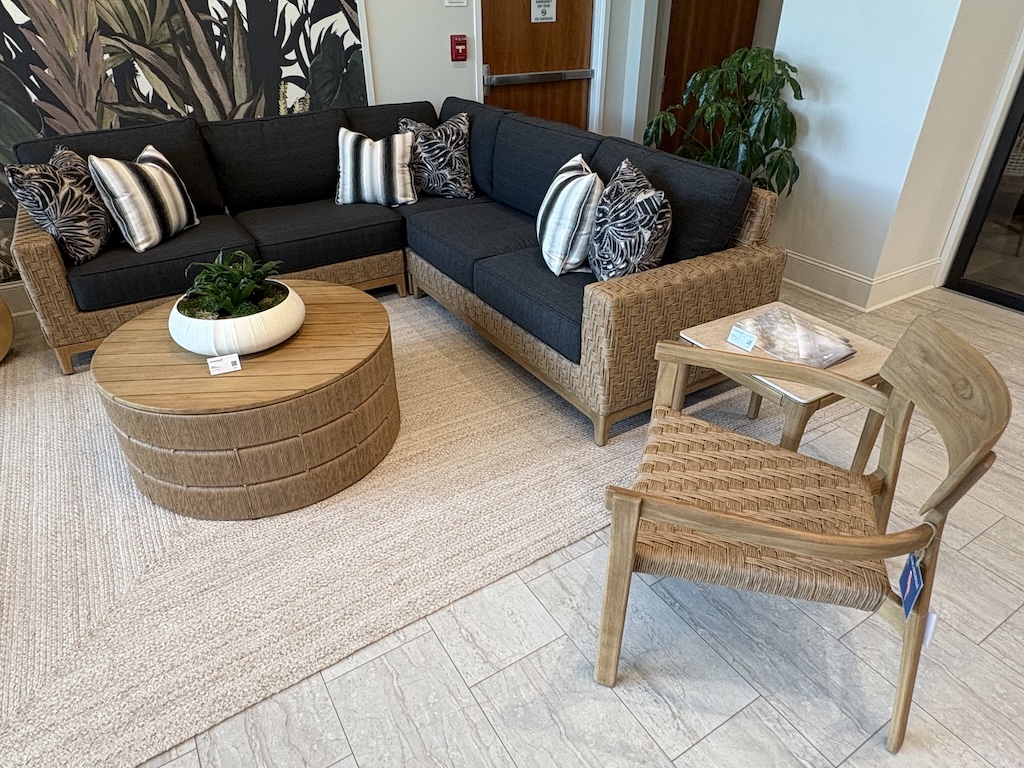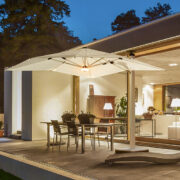I’ll never forget a seminar I went to at HPBExpo in 2018 where three hearth experts —Lucas Stritsman (sales team director, Best Fire), Kathy Buzbee (owner, Absco Fireplace & Patio), and Wayne Swaney (retail sales manager, Fireplace Stone & Patio)—shared why hearth dealers should sell outdoor furniture. It just made so much sense.
And while that was an educational seminar for those who sell hearth products, it also got me thinking about how valuable of a lesson it is for casual specialty retailers.
Adding new products or categories to your store can help you stand out and reach new customers. It can increase your revenue and give you products to sell during the off-season. And now is the time to plan on how you might bring those new products into your store.
For example, Amy Arant, owner of While Wrapsody in Blue, offers products for interiors: lighting, small furniture, accent pieces, and gifts and decor, across 3,800 square feet, with a few outdoor pieces scattered throughout. And her 2,500-square-foot outdoor store has a full selection of outdoor products, displayed inside and out.
Because of that, many customers visit the outdoor store after they see some of the product in the indoor shop.
“The outdoor store opened up a new customer base for me,” she says. “And a lot of times I catch customers at the downtown store and send them to the outdoor store, so that’s been helpful.”
However, opening a whole new store for product is a commitment that many cannot make, so looking for products that are complementary to your business model and beneficial to your cash flow during the offseason—like hearth, grills, or home recreational products.
“Some of the home recreational products can be pretty complimentary because if you think about, billiard tables or game room furnishings or bars or stools—historically the season the for those is early fall/winter, so they sell less in the summer months and more in the winter months,” says Erik Mueller, CEO of Watson’s Furniture. “Grills also make sense, though they are a low-margin business.”
To add these categories, he says your need to think strategically about what product lines exist and which ones make the most sense for your demographic.
Jessica Salisbury, CEO of Village Green Home and Garden, suggests that carrying Christmas products can help bring customers in during the cooler months when outdoor business is typically a bit slower. There are tons of Christmas vendors at the Atlanta and Las Vegas Markets that you could shop this coming year to prepare for 2022.
“Other areas that would be ideal for patio shops that a lot of them don’t get involved in is gifts,” she says. “I think the world of gift is an excellent way for people to get involved, particularly anything relating to the outdoor space. I can’t tell you how many outdoor furniture stores I’ve been to, that have all of these great furniture options, but have nothing else that goes with the package.”
She recommends pottery as a good place to start.
“There are tons of pottery options out there,” she says. “And for anybody that goes to the gift shows, one of the biggest things trending now is indoor plants and ceramics. People in our industry should go to Atlanta, Las Vegas, and High Point, and see what’s out there.
“Having pottery is a huge thing that people are missing out on in our industry,” she continues. “And that goes for all of the accessories that people would use in their sunrooms or in their screened-in porches and in their outdoor space.”
However, when thinking about what to bring in, you also have to consider the difficulties of adding new categories. It can be tempting to look at other retailers who add categories and want to jump in, but knowing what not to add is as important as knowing what to bring in—as it may not be as easy as some make it look.
When Watson’s wanted to take its flagship store to the next level, they decided to add indoor furniture to the mix. But that was no easy feat.
“It’s not a short-term strategy,” Mueller says, and he adds that they only introduced indoor products into the flagship Cincinatti store and not others.
“When you get into the indoor furniture business, you need square footage, and you need a considerable amount,” he says. “And so to find that square footage, you’d need to change the size of your store and the merchandising mix in some areas. A retailer needs to be in a financial position as well, and to transition into the indoor furniture business and in an 8,000- or 10,000- square-foot-patio shop I think is virtually impossible.”
For that reason, Mueller doesn’t suggest getting into the indoor category unless you have plenty of square footage and a strategic, long-term plan.
Village Green carries plants—which they actually carried before starting to sell outdoor furniture—and it’s another category that’s not as easy to get into.
“Plants are an excellent way to build a business and to get people you know, to come into your store,” Salisbury explains, “But for an exclusive patio store, I don’t know that I would actually recommend it unless they had somebody on their staff that really knew what they were doing when it comes to plants. There’s an endless amount of questions that people need to be able to answer, they would have to have a dedicated plant expert on staff to write to handle those questions. It can be a recipe for disaster if you don’t know what you’re doing.”
As you reflect on your business this past year and look to the New Year, also think about how you can increase business through new categories.
While there are certain categories that will take more time than others—and some that may not even be worth trying to get into—there are a few that you can start planning to add that could bring in new customers and help keep business strong during the offseason.








